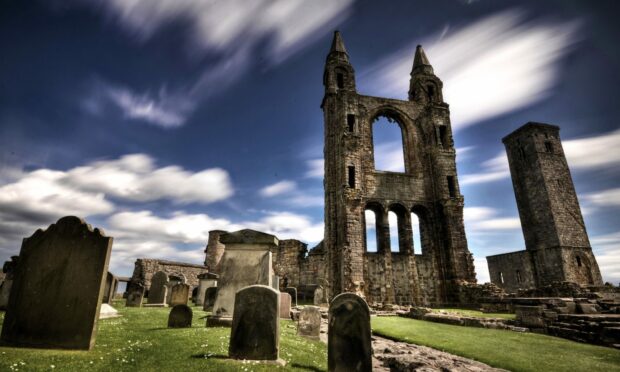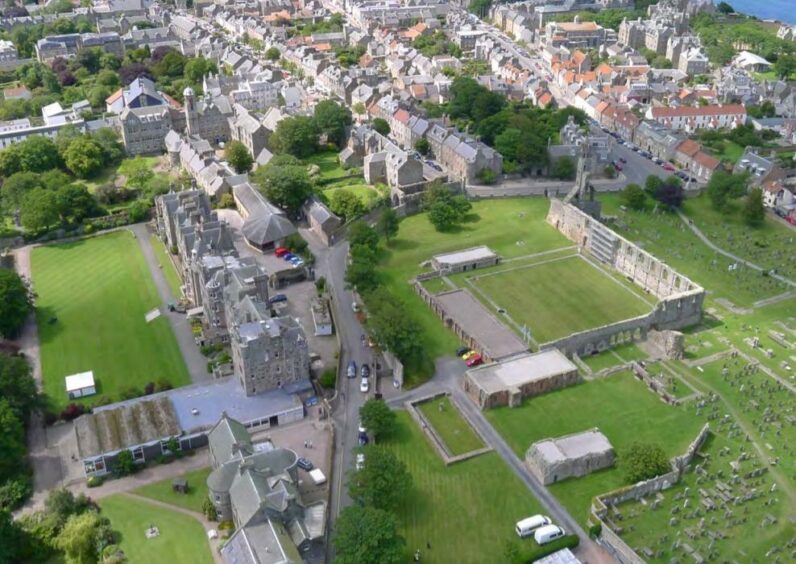A new staff depot could be created in the hallowed grounds of the historic St Andrews Cathedral.
Historic Environment Scotland has applied for conservation area consent to pull down the existing depot at the site and replace it with a more modern modular building suitable for the requirements of the current workforce.
Up to seven monument conservation unit staff, masons, joiners, painters and labourers currently work from the depot, alongside two visitor operations staff.
New depot proposal
The busy facility serves not only five monuments within St Andrews itself – St Andrews Castle and Cathedral, the West Port, St Mary’s Kirkheugh and Blackfriars Chapel – but also three monuments outwith the town, namely Abernethy Round Tower, Scotstarvit Tower and Balvaird Castle.
Historic Environment Scotland (HES) say the work to provide replacement facilities will be carried out sensitively and that there should be no need for any excavation on site.
“As an ecclesiastical site of long use, there is always the possibility of unrecorded archaeology being affected by works,” a spokesperson noted.
“However, the nature of our current understanding supports the position that the present works are unlikely to affect archaeological deposits.
“It is however recommended that care should be taken to distribute the weight of the temporary facilities as much as possible to reduce the impact of compression on artefacts and soil stratigraphy.”
Existing building to be demolished
While the existing depot is demolished and work on the new building is carried out, temporary facilities will be put in place for the “minimum amount of time possible”.
“There is likely to be some impact on the setting of the monument,” the HES spokesperson added.
“The present facilities are largely screened by planting, but the temporary facilities will not have this benefit.
“However, they will not impede key views to or from the monument, nor will they limit views between key features of the site.
“This, combined with their temporary nature, will ensure any impact on setting is limited”.
St Andrews Cathedral was Scotland’s largest and most impressive medieval church and the primacy of the Christian faith in the country.
Scotland’s largest medieval church
The Cathedral mostly dates from the mid-12th Century, however there is evidence of early Christian use from the 8th Century, for Pictish and Culdee worship, when relics of St Andrew were brought to the site.
St Rule’s Tower, within the precinct, is an earlier church building pre-dating the cathedral by half a century and the remains of St Mary’s on the Rock, an earlier Culdee Church, sit just outside the cathedral precinct walls at the east.
The Cathedral has been heavily damaged both by historic storms and the Scottish Wars of Independence and was abandoned following the Protestant Reformation.
It now stands mostly ruinous with only St Rule’s Tower, the gables of the West Front and Chancel, the south wall of the Nave and the east wall of the Cloisters remaining at height.











